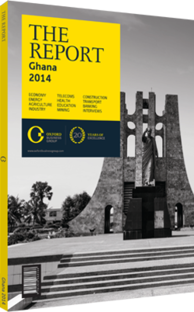OBG talks to Mustapha Ahmed, Acting Minister of Trade and Industry

Interview: Mustapha Ahmed
How can the government reduce the volume of informal activity in the economy?
MUSTAPHA AHMED: The Rural Enterprises Programme is a key scheme under the Ministry of Trade and Industry (MOTI) to bring the informal sector into the mainstream economy. It aims to raise the number of rural micro and small enterprises (MSEs) that generate profit, exhibit growth and create employment. Being implemented from 2012 to 2020, the scheme facilitates access to district-based business development services, technical skills training and rural finance. From January 2012 to June 2014, 59,892 rural MSEs were registered or formalised; 85,561 new rural MSEs were established; and 62,731 agro-based and agro-related businesses were established. Also providing support to informal enterprises is the National Board for Small Scale Industries and the Craft Initiative. It will also be important to target informal trade associations with support and formalisation assistance.
How effective has the Export Development and Agriculture Investment Fund (EDAIF) been?
AHMED: The Export Development and Investment Fund was established in 2000 to provide credit and grants for Ghana’s export trade. The fund was altered in 2011 to expand financing to agro-processing and agri-business, and it became known as the EDAIF. Since its establishment the fund has supported many businesses. Agricultural projects funded include farmer-based organisations producing exportable produce like chilli pepper, mango, citrus, cashew, pineapples, cassava, sweet potato and palm oil. This sector constituted 28% of the total between April 2002 and December 2013.
The EDAIF also funded the construction of a storm drain at the Tema Free Zones Enclave in 2012, as well as land procurement for the establishment of industrial parks by the MOTI. A total of 17 research projects valued at a combined GHS809,000 ($308,000) have been funded during this period. Despite these achievements, the EDAIF can do more by decentralising its offices to the various regions and districts, identifying strategic sectors for support and ensuring more efficient and effective ways of monitoring funds disbursed.
What impact do you expect the economic partnership agreement (EPA) with the EU to have on Ghana?
AHMED: The West Africa (WA)-EU EPA includes a market access offer but also fiscal neutralisation and development cooperation. The EU duty free market access into the West African region for 75% of tariff lines is split into four groups: tariff on lines within Group A will be eliminated by 2025; those in Group B by 2030; those in Group C by 2035; and those in Group D are to be the 25% of lines excluded from liberalisation.
According to impact assessments, the first phase of EPA application should be positive for the vast majority of manufacturing companies. In the second phase around one-third may see a drop in their profits, with losses concentrated in four sectors: wood products, nonmetallic mineral products, base metals and metal products other than machines. The negative impact of the EPA on manufacturing firms is relatively small compared to even a minor acceleration in productivity.
Companies from the WA region exporting to the EU should enjoy reduced prices of inputs and capital – and they would have reduced market access if the EPA was not signed. The terms of the generalised system of trade preference are less favourable than the EPA. In Ghana, processed cocoa, fish, fruits and vegetables are the most valuable exports to benefit from duty free market access to the EU. All agricultural produce and agro-processed products would be excluded under the 25% exemption, along with sensitive manufacturing products such as textiles, cement, vehicles and so on.
The development cooperation dimension of the EPA will release $8.8bn in 2015-19, most of which will be allocated to financing infrastructure to improve the region’s production and marketing. The EPA’s trade defence measures give the West African countries enough flexibility to provide temporary protection and cover adjustment costs without compromising the EPA.
You have reached the limit of premium articles you can view for free.
Choose from the options below to purchase print or digital editions of our Reports. You can also purchase a website subscription giving you unlimited access to all of our Reports online for 12 months.
If you have already purchased this Report or have a website subscription, please login to continue.

